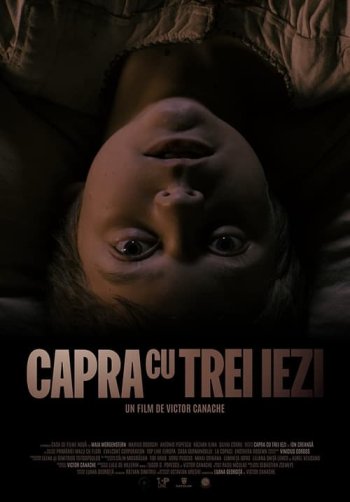 Fairy tale adaptations have been all the rage in modern cinema, with Hollywood littering the 2020s with new versions of CINDERELLA, THE LITTLE MERMAID and SNOW WHITE AND THE SEVEN DWARFS. Here’s a horror-tinged 2022 adaptation, hailing from Romania, of a more obscure (by English speaking standards) fairy tale: “The Goat and her Three Kids” by Ion Creangă, a towering figure in 19th Century Romanian literature. This Victor Canache directed film (which followed the Creangă inspired 1975 musical MAMA) was adapted from a 2019 short made by Canache, who in both films swapped the goats and wolves that populated the story with humans, including the iconic Romanian actress Maia Morgenstern (of THE PASSION OF THE CHRIST).
Fairy tale adaptations have been all the rage in modern cinema, with Hollywood littering the 2020s with new versions of CINDERELLA, THE LITTLE MERMAID and SNOW WHITE AND THE SEVEN DWARFS. Here’s a horror-tinged 2022 adaptation, hailing from Romania, of a more obscure (by English speaking standards) fairy tale: “The Goat and her Three Kids” by Ion Creangă, a towering figure in 19th Century Romanian literature. This Victor Canache directed film (which followed the Creangă inspired 1975 musical MAMA) was adapted from a 2019 short made by Canache, who in both films swapped the goats and wolves that populated the story with humans, including the iconic Romanian actress Maia Morgenstern (of THE PASSION OF THE CHRIST).
The fed-up widow Capra (Morgenstern) raises three young boys in a 19th Century forest. “All you’re good for is wreaking havoc and squandering!” she reprimands them, and these kids are indeed quite rambunctious, particularly the older two (Razvan Ilina and Silviu Corbu), who torment their younger brother (Antonio Gavrila) incessantly. One day Capra meets the creepy Lupul (Marius Bodochi), a family acquaintance who unabashedly lusts after her. He’s also a child killer, although his motivations are left obscure (unlike in the fairy tale, in which the wolf’s threat to the mother goat’s children was evident because, simply, wolves eat goats).
Leaving one day for supplies, Capra sings a song so her kids will be able to identify her when she returns—in other words, they’re not to open the front door unless they hear the song. Lupul, however, overhears Capra’s instructions, and by whistling the tune convinces one of the kids to admit him. He promptly kills the two older boys, but the youngest manages to evade him. Capra returns and, upon learning of what happened, becomes determined to off Lupul—and does so by inviting him to a mini-feast and digging a big hole under his chair.
Writer-director Victor Canache set himself a major challenge in adapting this fairy tale, which in its most prominent English form only runs 872 words. That explains why this film, despite a scant 83-minute runtime, feels excessively drawn-out. Furthermore, in transposing the story from the animal to the human world (it made more sense the other way) Canache has sacrificed any complexity it might have had, with the film possessing all the depth of a FRIDAY THE 13TH movie, and none of the enjoyment.
Morgenstern is quite strong in the lead role, conveying indomitable strength, desperation and sadness, but Marius Bodochi is too one-note as the antagonist (not that the screenplay gives him much to work with). Of the child performers Antonio Gavrila is wisely placed center stage, as his emoting is by far the strongest.
Beyond that we’re left with the visuals and atmosphere to maintain attention, and in those aspects the film is indeed impressive. Bolstered by a profoundly eerie score by Sebastian Zsemlye and cinematography by Lulu de Hillerin that works wonders with natural lighting (albeit muddied by out-of-place handheld camerawork), the film’s portrayal of the harshness and beauty of 19th Century Romania looks and feels authentic. It’s a viewing experience that belies its director’s first-time status, even if the script displays it all too blatantly.
Vital Statistics
THE GOAT AND HER THREE KIDS (Capra cu trei iezi)
Casa de Filme Noua
Director: Victor Canache
Producer: Luana Georgita
Screenplay: Victor Canache
(Based on a story by Ion Creangă)
Cinematography: Lulu de Hillerin
Editing: Victor Canache, Tudor D. Popescu
Cast: Maia Morgenstern, Marius Bodochi, Razvan Ilina, Antonio Gavrila, Silviu Corbu
